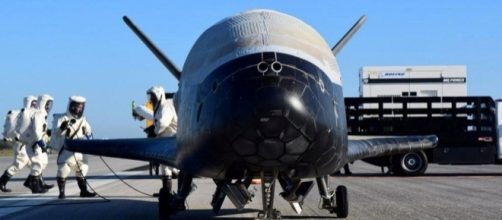The X-37B space plane ended its 718-day space trip and landed on the Shuttle Landing Facility (SLF) at Kennedy Space Center in Florida on Sunday, May 7. This landing zone was last used when NASA’s final space shuttle mission came back in July, 2011. This mission was the fourth one for the X-37B and the first time that the Air Force craft has landed on the SLF.
Air Force’s mysterious plane
The just-concluded mission was named Orbital Test Vehicle-4 or OTV-4 and it was the fourth overall mission for the X-37B. All four missions were launched from the Cape Canaveral Air Force station.
However, the first three landings took place in the Vandenberg Air Force Base in California. This time scientists found a way for the space plane to land on the SLF, Space.com report.
The Air Force currently owns two X-37B planes, both of which have been designed by Boeing. Look-wise, the vehicle bears a striking resemblance to NASA’s now-retired space shuttle Orbiter. However, the Air Force’s planes are much smaller and are just 29 feet (length). Both the X-37B’s can fit into NASA’s orbiter.
While launching, the space plane goes up vertically, but the innovative technologies allow it to be positioned horizontally when it makes its landing. What has managed to draw the attention of people is the confidential nature of the missions the X-37B undertakes.
People have construed that the space plane may be a weapon of some sort. However, Air Force officials have vehemently denied these rumors and stated that the plane is simply used to test new technologies.
Some of the technologies that are being tested out include navigation and control, thermal protection systems, lightweight electromechanical flight systems, and more. However, a theory also exists that the X-37B tests several sensors for the National Reconnaissance Office or NRO. These claims have also never been confirmed by either the Air Force or the NRO.
History of X-37B space plane
All of the X-37B missions have featured the space plane remaining in Earth’s orbit for a long period. For instance, in its first mission the X-37B (dubbed OTV-1 at that juncture) lifted off on April 22, 2010.
The space plane remained in the orbit for 224 days. Similarly, OTV-2 launched on March 5, 2011, and remained in space for 468 days. Lastly, the OTV-3 launched on December 11, 2012, and lasted in space for 674 days. The OTV-4 mission started on May 20, 2015 and landed almost two years later making it the longest mission for the X-37B.


